A backlink audit is a key but often neglected SEO task. It involves thoroughly analyzing your website’s backlink profile to identify issues impacting performance.
In this comprehensive guide, we’ll explore how to use the powerful Ahrefs suite of tools to audit your backlinks from top to bottom.
Why Backlink Audits Matter
But first – what exactly is a backlink audit and why is it important?
A backlink audit examines all the external sites linking to your website. It helps you understand the overall health and quality of your backlink profile.
Specifically, a backlink audit aims to:
- Evaluate metrics like total links and referring domains
- Identify unnatural, manipulative or low-quality links
- Fix broken/404 backlinks causing issues
- Uncover competitor link building strategies
- Discover new link building opportunities
Completing regular backlink audits is crucial for maintaining strong SEO. It provides data to inform strategies around outreach, link building, and reclamation.
Auditing backlinks can also help diagnose issues caused by negative SEO attacks, spam links, or algorithmic penalties. Google cares about link quality, so cleaning up your profile can improve rankings.
Overall, a backlink audit gives you the insights needed to boost your website’s search performance through better link building.
Why Use Ahrefs for Backlink Analysis?
One of the most powerful tools for in-depth backlink analysis is Ahrefs. Let’s look at key advantages Ahrefs provides for auditing links:
- Huge index – Ahrefs crawls over 13 billion webpages and tracks over 3 trillion backlinks – the largest link database available.
- Accuracy – Ahrefs applies machine learning models to classify backlink quality and relevancy with a high degree of accuracy.
- Custom filters – Advanced filters allow drilling down into your link data by factors like domain authority, location, anchor text and more.
- Link intersection – Easily uncover sites linking to both you and competitors through link intersection reports.
- Link alerts – Get notified of new links, so you can stay on top of link building in real-time.
- Workflow automation – Batch analysis, API access, and CSV exports enables automating audits.
With its unparalleled backlink intelligence, Ahrefs makes analyzing and optimizing your website’s links highly actionable.
Now let’s walk through a standard backlink audit step-by-step using Ahrefs’ powerful toolkit:
Step 1: Get a High-Level View of Your Backlink Profile

First, use Ahrefs’ Site Explorer to understand your website’s overall backlink profile health at a high level:
Check Your Referring Domains
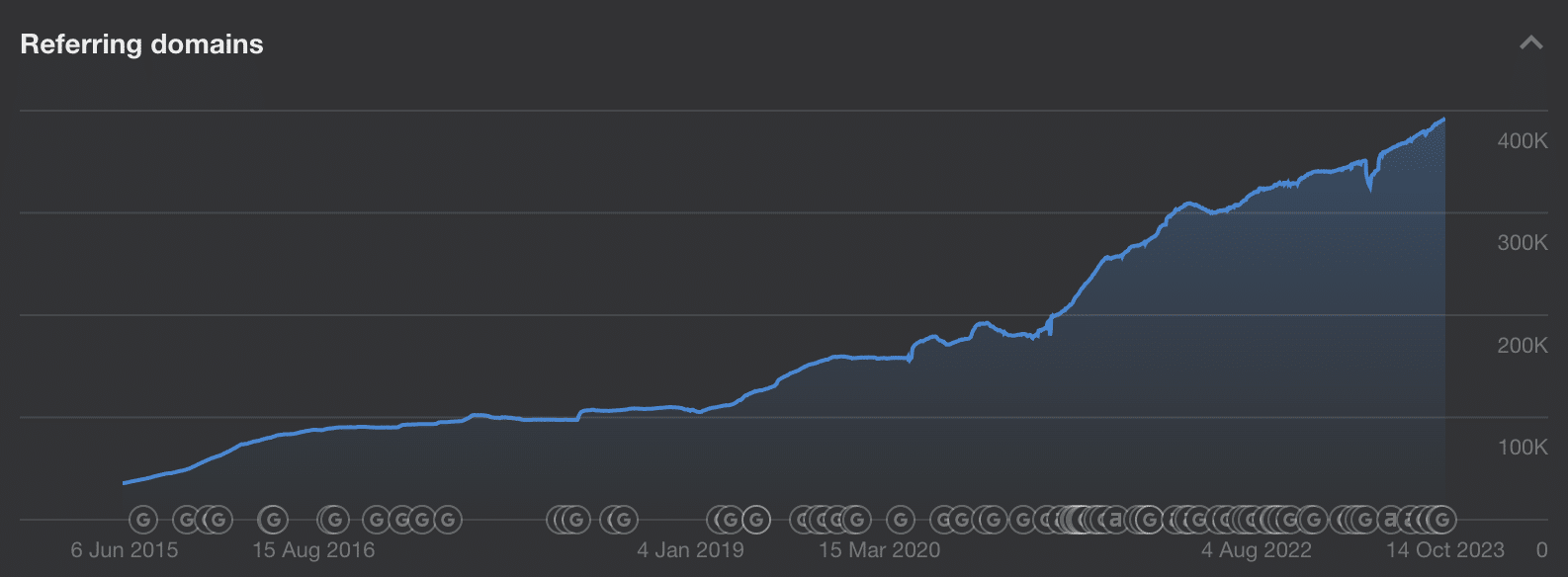
Referring domains show the number of unique websites linking to you. This helps gauge the reach and diversity of your backlink profile.
Ideally, you want to see this number steadily increasing over time. Stagnant growth or sudden spikes may indicate issues.
Review Total Backlinks
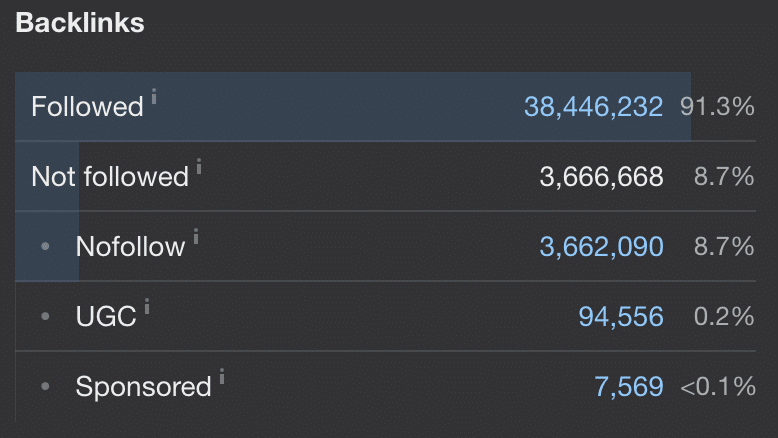
Your total backlink count is the number of individual links from sites to your pages. Together with referring domains, this gives you a sense of your overall link equity.
Look for a healthy rate of new links being built each month as your content and outreach efforts pay off. Erratic changes or plateaus warrant a deeper look.
Analyze Domain Ratings
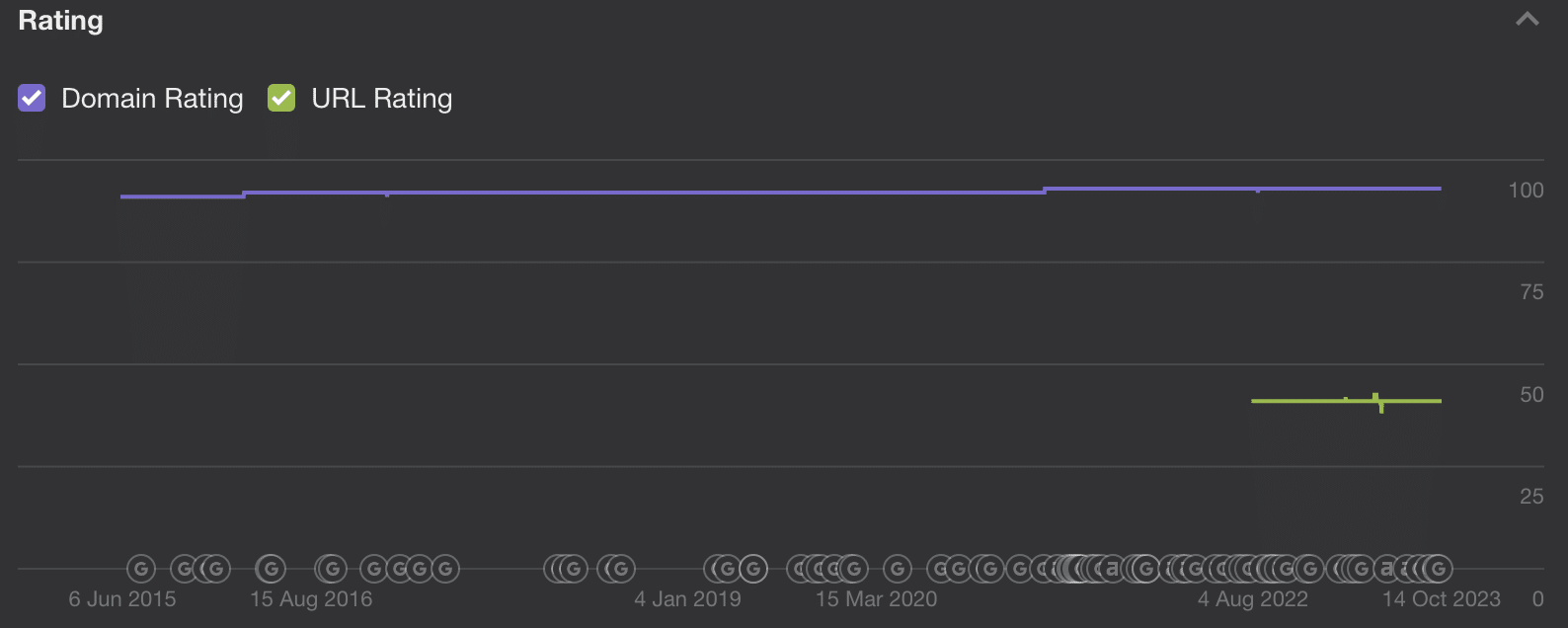
Ahrefs assigns each referring domain a Domain Rating between 0-100 based on its own authority and quality.
Scan the distribution of ratings for your backlinks. Ideally, you want to see most links coming from reputable sites rated over 50 or higher. Too many low quality domains could indicate toxic links.
Check Anchor Text Ratios
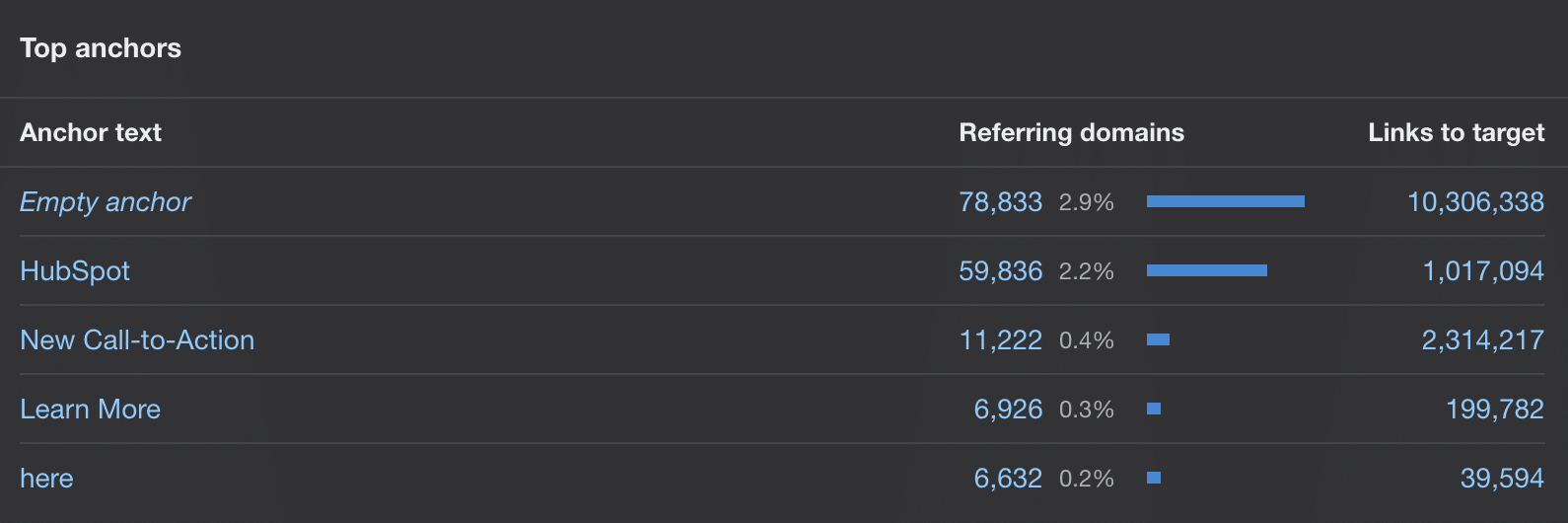
Your mix of anchor text – the linked keywords pointing to your site – should be diverse. Too much optimization looks unnatural.
Watch for an overabundance of “exact match” anchor text links including your target keywords. This raises a red flag for manipulative links.
This initial snapshot from Site Explorer gives you a sense of your overall backlink profile health and where potential issues may lurk. Now we can dive deeper.
Step 2: Identify and Remove Harmful Links
The key purpose of an audit is identifying low-quality, irrelevant or artificial links that may be damaging your site’s SEO. Let’s uncover these:
Review All Your Backlinks
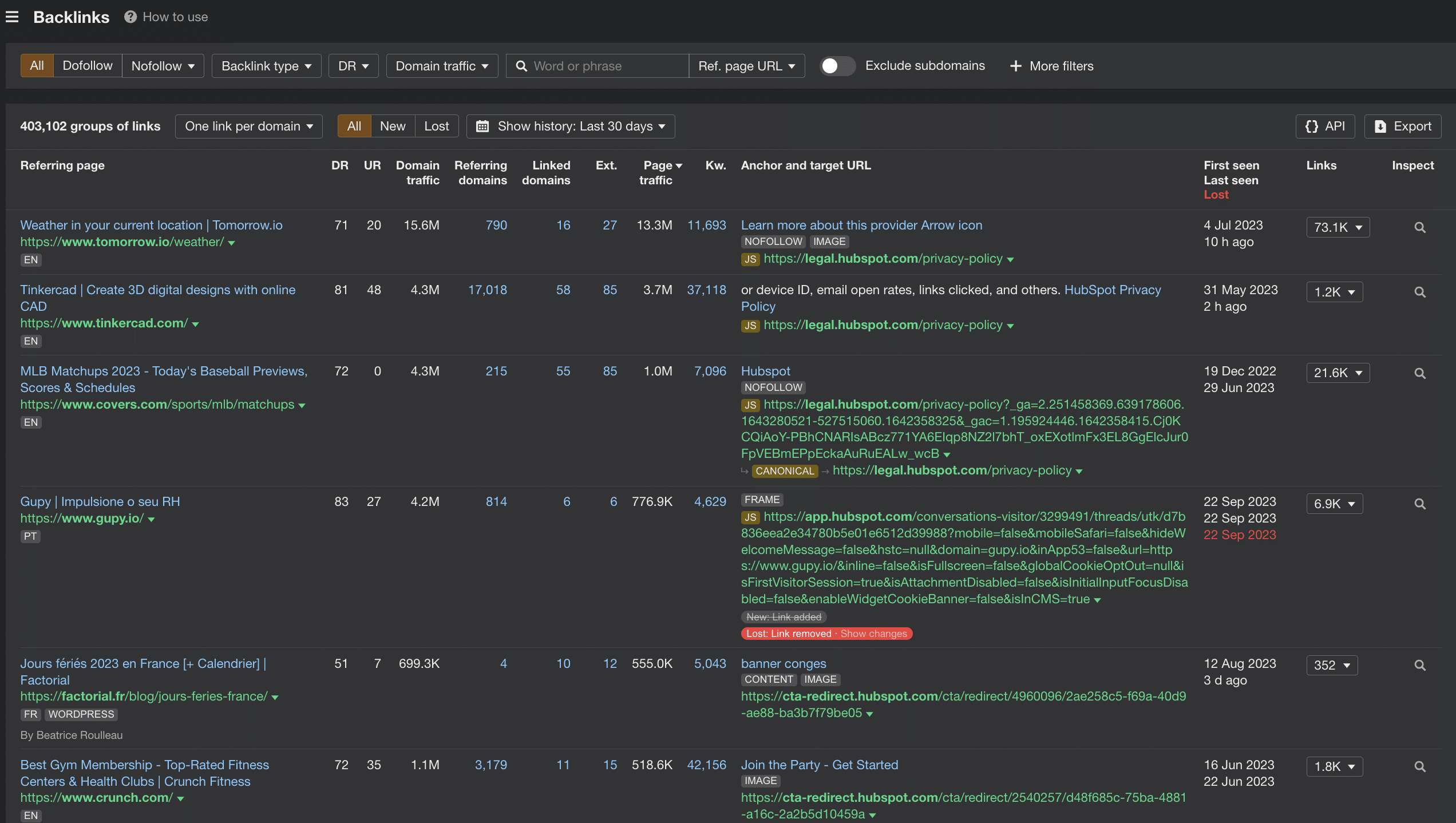
Within Ahrefs’ Backlinks Report, you can browse every single link pointing to your website. Scan through these to assess link quality.
Watch for patterns like:
- Irrelevant sites – Do they match your industry and topics?
- Low authority domains – Specifically watch for scores under 10.
- Overly commercial anchors – Too many instances of “brand + keyword”
This manual scan will reveal suspect links for further investigation.
Apply Custom Filters

Leverage Ahrefs’ advanced filters to isolate subsets of bad links by factors like:
- Nofollow status – Are toxic links abusing nofollow?
- Redirect chains – Coming through multiple redirects
- Language – originating from unrelated countries
Analyzing filtered link lists unveils patterns of low-quality links to take action on.
Disavow Dangerous Links
For clearly manipulative or spam links, you can directly import them into Google Disavow using Ahrefs.
But use disavows selectively – blanket disavowing all new links may mistakenly undo your hard work. Only target obvious toxic links or in a manual action.
Now you’ve cleaned up the most harmful links hurting your rankings. Let’s also fix broken ones.
Step 3: Find and Fix Broken Backlinks
Broken links (404 errors) leak authority and fail to pass SEO value. Let’s find and restore these:
See Top Linked Pages
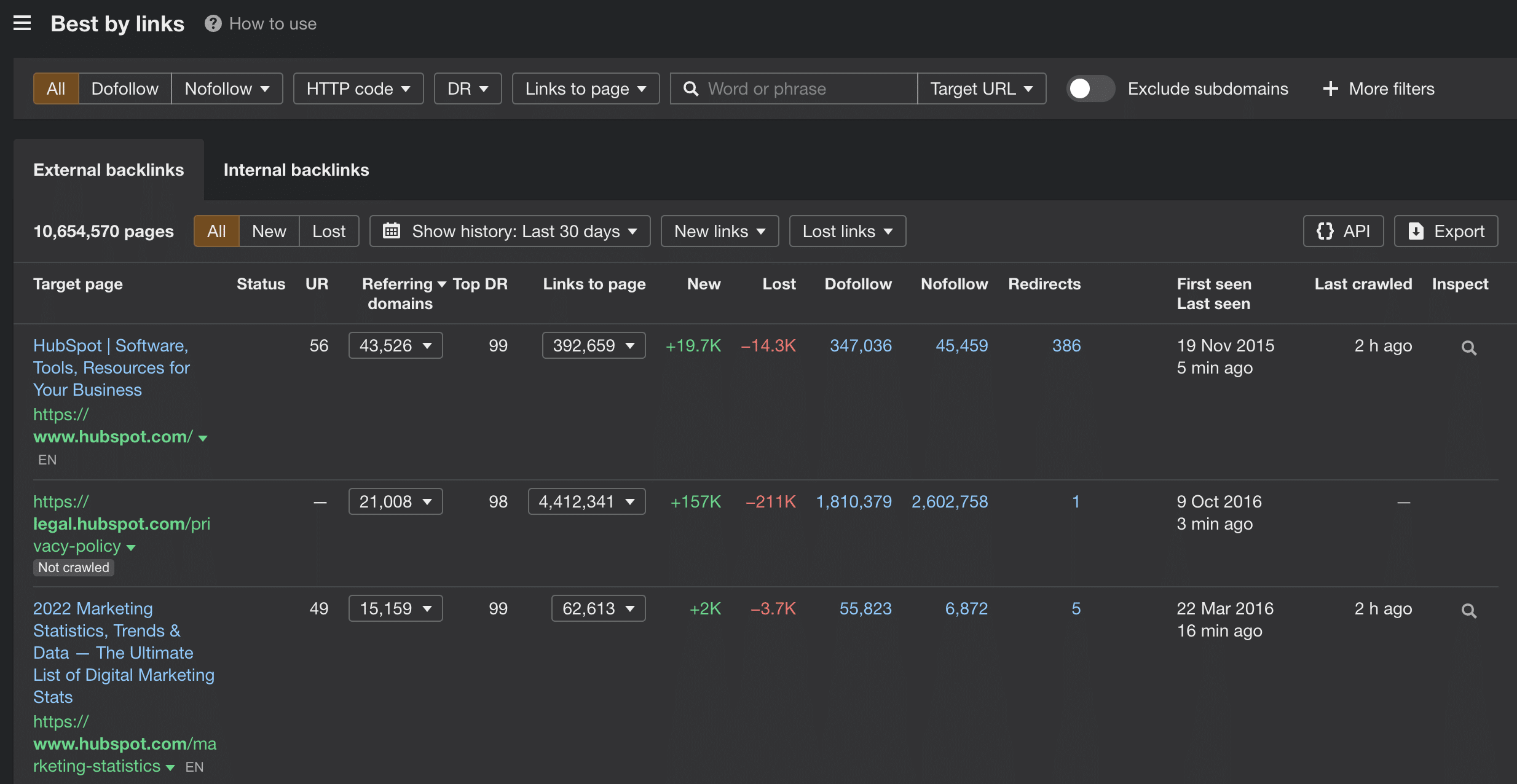
In Ahrefs’ Best by Links report, you can view pages on your site attracting the most backlinks – these are priorities to fix if broken.
For example, your “Our Services” page may have over 52 links, making it important to maintain.
Filter for 404 Errors
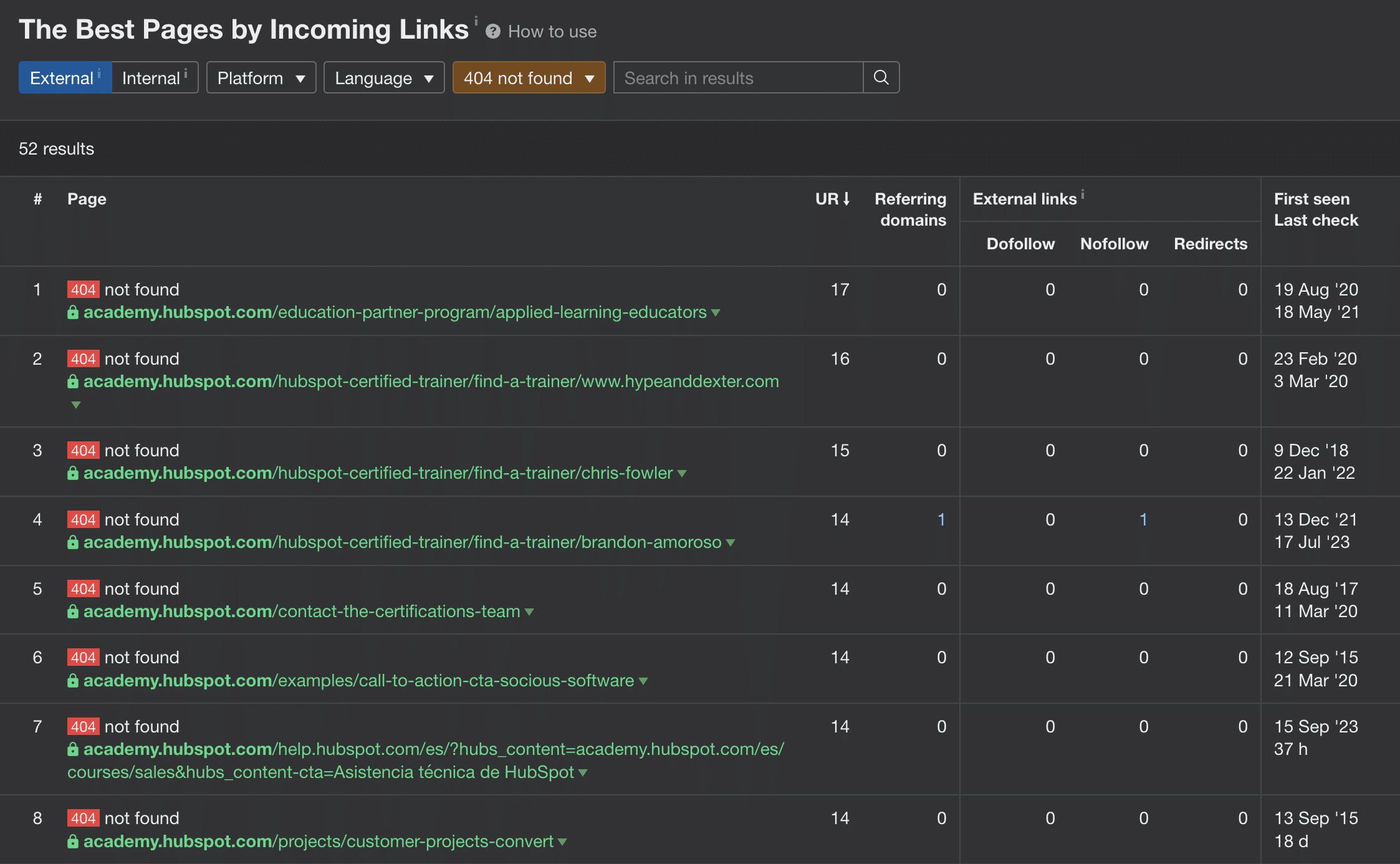
Next, apply the “404” filter in your Backlinks report. This reveals all links going to deleted or changed pages now resulting in dead links.
Make a list of exactly which need attention based on link numbers and importance of the content.
Redirect or Update Relevant Pages
For each broken page, you can either redirect the URL to current content, or update the content to match the old page focus.
For example, if your popular “Cloud Hosting” guide is now gone, redirect that URL to a newer guide covering the same topic. This preserves the SEO value of the links.
Fixing broken backlinks retains the power of links gained over time. Now let’s benchmark against the competition.
Step 4: Analyze Competitor Backlink Profiles
Researching how competitors acquire links can inform your own outreach strategies:
Uncover Common Backlink Sources
Ahrefs’ Link Intersect reveals websites linking to both you and competitors. You can reach out to these sites as proven link building targets.
Sort by the domains linking to competitors but not you, and identify new networking opportunities.
Find Their Best Assets
Analyze competitors’ popular link attracting content using Ahrefs’ Content Explorer.
See what assets like linkable tools, research reports or resources are working well in your space, and create similar helpful content that could earn authoritative editorial links.
Compare Key Metrics
Use Ahrefs’ Batch Analysis tool to compare backlink data for multiple domains side-by-side.
Look for gaps between their domain authority, referring domains, link growth and other metrics versus your own site’s figures to find areas for improvement.
Gaining insights into competitors’ successful link building provides ideas to boost your own efforts.
Frequently Asked Questions About Backlink Audits
How can I measure the impact of my audit?
Key metrics to track over time include your domain rating, referring domains, organic keywords ranking, and organic traffic. Improvement across these KPIs indicates your audit and clean-up had a positive effect.
What are common audit mistakes?
Failing to research links contextually, over-disavowing, not fixing broken links, or neglecting to track progress over time. Avoid these pitfalls through careful analysis and monitoring.
How can I replicate competitors’ backlinks?
Thoroughly analyze their best linking pages using Ahrefs’ Content Explorer. Produce similar assets like guides and tools. Vet and outreach to their referring domains editorially – don’t duplicate manipulative patterns.
How can I recover from a penalty?
If hit with a Google manual action, immediately disavow truly toxic links revealed in your audit. Improve content quality, build new links slowly, and submit reconsideration requests. Monitor progress in Search Console.
How should I monitor links over time?
Schedule quarterly Ahrefs audits to analyze new links, check growth by source, identify new prospects, and catch toxic links. Ongoing monitoring ensures your profile stays healthy.
The Value of Routine Backlink Audits
Performing regular backlink checkups using Ahrefs provides enormous benefits for your SEO:
- Remove threats – Disavow dangerous links sabotaging your site’s rankings.
- Unlock opportunities – Use link intersection to find new outreach prospects.
- Benchmark progress – See link growth trends over time by source.
- Inform strategies – Optimize plans around insights uncovered.
- Diagnose issues – Pinpoint factors damaging your rankings.
- Improve efficiency – Automate analysis using Ahrefs workflows.
Wrapping Up
Leveraging Ahrefs’ unparalleled backlink intelligence will help you maximize positive links while minimizing harmful ones.
Schedule backlink audits quarterly, or more frequently after major website changes. Staying on top of your link profile is key for sustaining search visibility.

